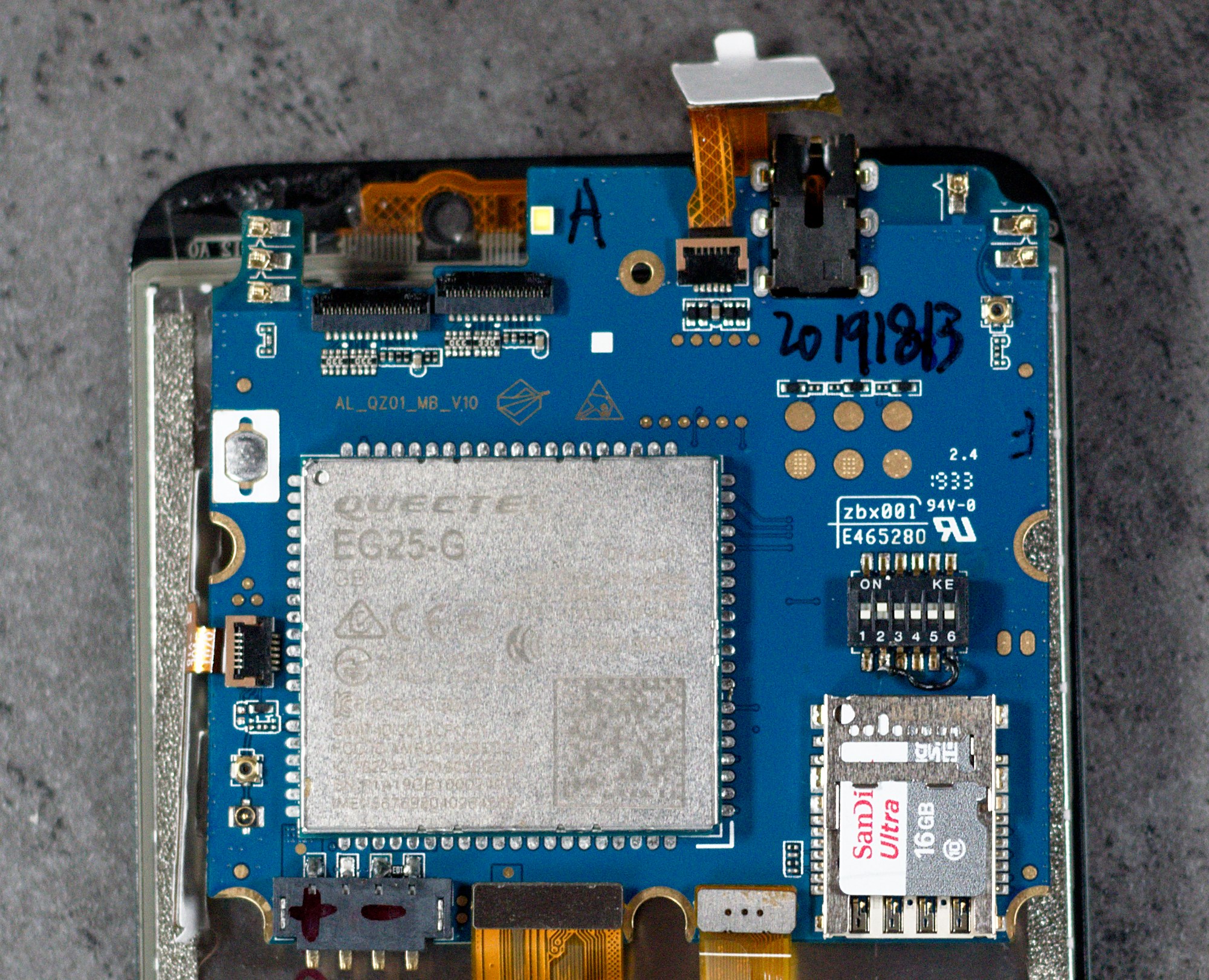Difference between revisions of "PinePhone"
FlyingToast (talk | contribs) |
(→postmarketOS: Add wiki page link) |
||
| Line 81: | Line 81: | ||
postmarketOS is a preconfigured version of [https://www.alpinelinux.org/ Alpine Linux] for mobile devices. The latest builds can be downloaded from the [https://images.postmarketos.org/pinephone/ images page] to be flashed to the PinePhone. | postmarketOS is a preconfigured version of [https://www.alpinelinux.org/ Alpine Linux] for mobile devices. The latest builds can be downloaded from the [https://images.postmarketos.org/pinephone/ images page] to be flashed to the PinePhone. | ||
More information is available at [https://postmarketos.org postmarketos.org]. | More information is available at [https://postmarketos.org postmarketos.org] and on their [https://wiki.postmarketos.org/wiki/PINE64_PinePhone_(pine64-pinephone) dedicated PinePhone wiki page]. | ||
=== Ubuntu Touch === | === Ubuntu Touch === | ||
Revision as of 13:06, 6 December 2019
The PinePhone is a smartphone created by Pine64, capable of running mainline Linux and supported by many partner projects. A "braveheart" edition is currently available for purchase from the PINE64 store, though it should be noted that this version comes without a preinstalled OS, and is geared specifically towards tinkerers and hackers. People looking for a stable consumer-grade phone should wait for the final release, which is expected to occur in March 2020 and will be available for at least five years.
Specifications
Dimensions: 160.5 x 76.6 x 9.2mm
Weight: Between 180-200 grams
Build: Plastic
SIM Card: Micro-SIM
Display:
- Size: 5.95 inches (151mm) diagonal
- Type: HD IPS capacitive touchscreen, 16M colors
- Resolution: 1440x720, 18:9 ratio
System on Chip: Allwinner A64
RAM: 2GB LPDDR3 SDRAM
Internal Storage: 16GB eMMC, extendable up to 2TB via microSD, supports SDHC and SDXC
Back Camera: Single 5MP, 1/4", LED Flash
Selfie Camera: Single 2MP, f/2.8, 1/5"
Sound: Loudspeaker, 3.5mm jack & mic (jack doubles as hardware UART if killswitch 6 is deactivated)
Communication: EG25-G
- LTE: B1, B2, B3, B4, B5, B7, B8, B12, B13, B18, B19, B20, B25, B26, B28, B38, B39, B40, B41
- WCDMA: B1, B2, B4, B5, B6, B8, B19
- GSM: 850, 900, 1800, 1900 (MHz)
- WLAN: Wi-Fi 802.11 b/g/n, single-band, hotspot
- Bluetooth: 4.0, A2DP
- GNSS: GPS/GLONASS/BeiDou/Galileo/QZSS, with A-GPS
Sensors: Accelerometer, gyro, proximity, ambient light, compass
Killswitches: Modem, Wifi & Bluetooth, Microphone, Cameras
Battery: 2750-3000 mAh Lithium ion (replaceable with any Samsung J7 form-factor battery)
I/O: USB Type-C (SlimPort), USB Host, DisplayPort Alternate Mode output, 15W 5V 3A Quick Charge, follows USB PD specification
History
The PinePhone was announced at FOSDEM 2019, February 2-4, 2019. The first Project Don't be evil devkit was on display at the Pine64 booth during the weekend.
Hardware revisions
The PinePhone platform went through two "developer kit" phases that partner projects used to prove their software on the upcoming platform.
Additionally, two "early adopter" revisions of the platform were created:
- PinePhone 1.0 "Developer"
- PinePhone 1.1 "Brave Heart" (schematic).
Version 1.1 was the first PinePhone available to the general public. Pre-orders for this batch started on November 15, 2019. It is expected to ship sometime in December 2019 to January 2020.
A "full release" Pinephone, which will likely have board revision 1.2, will be released in 2020.
Killswitch configuration
The PinePhone features six switches that can be used to configure its hardware. They are numbered 1-6, with switch 1 located nearest to the modem. Their on position is toward the top of the phone.
- Modem: On enables 2G/3G/4G communication and GNSS hardware, off disables.
- WiFi/BT: On enables Wi-Fi and Bluetooth communication hardware, off disables.
- Microphone: On enables audio input from on-board microphones (not 3.5mm jack), off disables.
- Rear camera: On enables the rear camera, off disables.
- Front camera: On enables the front camera, off disables.
- Headphone: On enables audio input and output via the 3.5mm audio jack, off switches the jack to hardware UART mode.
Modem and Carrier Support
To check if the PinePhone is supported on your carrier:
Search for your carrier on frequencycheck.com and compare the carrier's LTE/GSM/WCDMA frequencies to the PinePhone's supported frequencies (listed under the specifications section).
It is likely that there will be a few frequencies that your carrier uses which are not supported by the PinePhone. Not all of the carrier's frequencies need to be supported by the PinePhone for it to work - as long as most of them are supported, you will still get good coverage.
Operating Systems
The PinePhone will automatically boot from microSD if a bootable card is inserted. Although it is technically possible to use any ARM distro (because the PinePhone uses the mainline kernel), there are a few that are designed specifically for phones:
postmarketOS
postmarketOS is a preconfigured version of Alpine Linux for mobile devices. The latest builds can be downloaded from the images page to be flashed to the PinePhone.
More information is available at postmarketos.org and on their dedicated PinePhone wiki page.
Ubuntu Touch
Ubuntu touch is a mobile version of Ubuntu developed by the UBports community. Images can be downloaded from here. In the future, Ubuntu Touch will be able to be installed onto the PinePhone with the UBports installer GUI tool.
Sailfish OS
The latest Sailfish OS image can be installed using the flashing script.
The script downloads the image and bootloader, extracts everything and burns it onto the SD card. Note: The script will format and erase the SD card!
Instructions:
- Download the flashing script
- Insert a microSD card in your device
- Make the script executable:
chmod +x flash-it.sh - Execute it:
./flash-it.sh - Follow the instructions. Some commands in the script require root permissions.
Maemo Leste
Maemo Leste images can be downloaded here. The default username is root and the password is toor
